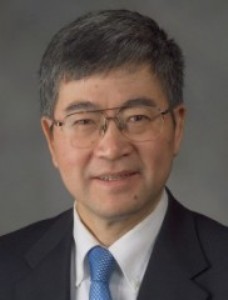May 2 2013
Biomedical imaging expert Ge Wang recently joined Rensselaer Polytechnic Institute as the John A. Clark and Edward T. Crossan Professor of Engineering, and a faculty member in the Department of Biomedical Engineering.
 Biomedical imaging expert Ge Wang recently joined Rensselaer Polytechnic Institute as the John A. Clark and Edward T. Crossan Professor of Engineering, and a faculty member in the Department of Biomedical Engineering.
Biomedical imaging expert Ge Wang recently joined Rensselaer Polytechnic Institute as the John A. Clark and Edward T. Crossan Professor of Engineering, and a faculty member in the Department of Biomedical Engineering.
“Dr. Wang is an innovating pioneer and international thought leader in the areas of X-ray computed tomography, bioluminescence tomography, and other imaging technologies. We are very pleased to welcome him to Rensselaer as the John A. Clark and Edward T. Crossan Professor of Engineering. Dr. Wang’s unique perspective, impactful research, and long history of success will help sharpen the upward trajectory of our growing Department of Biomedical Engineering,” said David Rosowsky, dean of the School of Engineering at Rensselaer.
Wang’s innovations over the past 25 years have helped advance the field of medical imaging. In 1991, he was the lead author of the first paper on helical multi-slice/cone-beam X-ray computed tomography (CT), which has since become one of the key enabling technologies behind medical CT scans. More than 100 million CT scans are performed around the world every year. In 2004, Wang published a breakthrough paper and holds a key patent on bioluminescence tomography.
Since 2007, Wang and his collaborators have been developing a novel theory known as interior tomography, which led to the new concept of “omni-tomography” and has revealed the possibility of performing CT and MRI scans simultaneously
“Professor Wang’s research in hybrid imaging, such as the integration of CT and MRI technologies, will provide an unprecedented access to anatomical, functional, cellular, and molecular data in tissue engineering and regenerative medicine, which is an emerging strength of Rensselaer,” said Deepak Vashishth, director of the Center for Biotechnology and Interdisciplinary Research at Rensselaer and head of the university’s Department of Biomedical Engineering.
A prolific researcher, Wang has authored or co-authored 335 refereed journal papers. His papers have been cited more than 8,000 times. He has edited three books, written several book chapters, and holds numerous patents related to his imaging work.
Over his career, Wang has secured $16 million in federal, industrial, and foundation research funding as the principal investigator, and $27 million as co-principal investigator, co-investigator, or mentor. A majority of this funding was granted by the U.S. National Institutes of Health.
Prior to joining Rensselaer, Wang served since 2006 as the Pritchard Professor at the Virginia Tech—Wake Forest University School of Biomedical Engineering and Science, where he was also director of the Biomedical Imaging Division. He served from 1997 to 2006 as a faculty member at the University of Iowa, and from 1994 to 1996 as a faculty member at the Mallinckrodt Institute of Radiology at Washington University in St. Louis.
Wang was the founding editor-in-chief of the International Journal of Biomedical Imaging. He currently serves as academic editor for PLoS One, associate editor for IEEE Transactions on Medical Imaging, and associate editor for IEEE Access, among others. He also has served as chair, co-chair, session chair, and member of numerous conference committees and review panels. Next year, he will serve as chair of International Symposium of Biomedical Imaging (ISBI), a leading conference in the biomedical imaging field.
Widely recognized by peers, Wang is a fellow of the American Institute for Medical and Biological Engineering, the Institute of Electrical and Electronics Engineers, the International Society for Optical Engineering, the Optical Society of America, and most recently the American Association of Physicists in Medicine.
Wang is the recipient of several research honors and awards, including the Dean’s Award for Excellence in Research in 2010 from the Virginia Tech College of Engineering.
Wang earned his bachelor’s degree in electrical engineering from Xidian University in China, a master’s degree from the Institute of Remote Sensing Applications at the Graduate School of Academia Sinica in China, and his master’s and doctoral degrees in electrical and computer engineering in 1991 and 1992, respectively, from the University at Buffalo.
Visit the Rensselaer research and discovery blog: http://approach.rpi.edu
Follow us on Twitter: www.twitter.com/RPInews